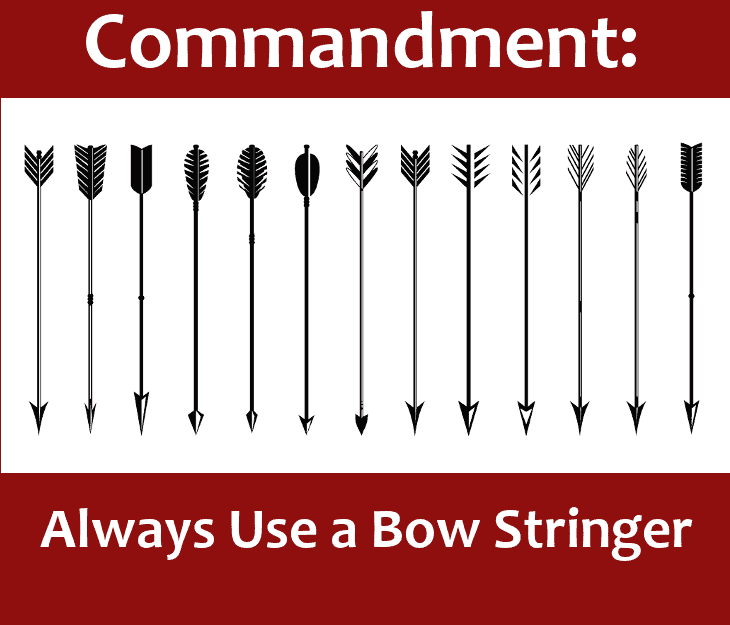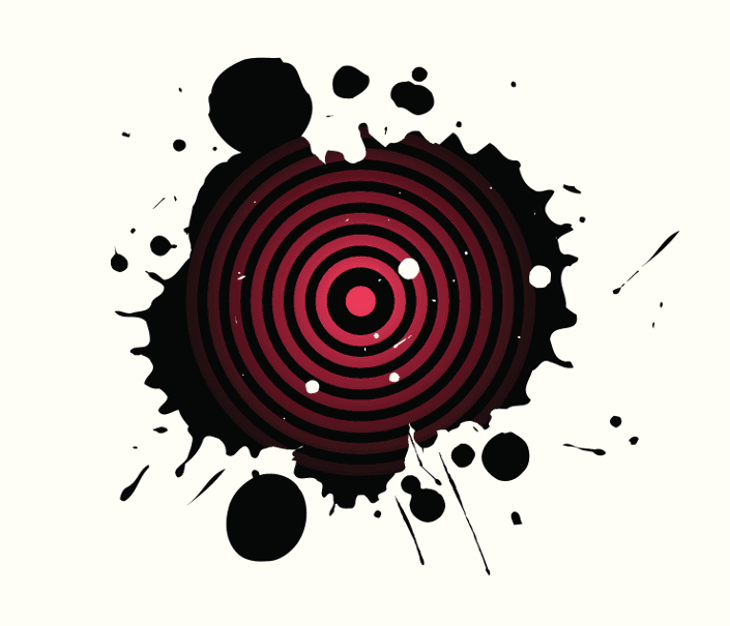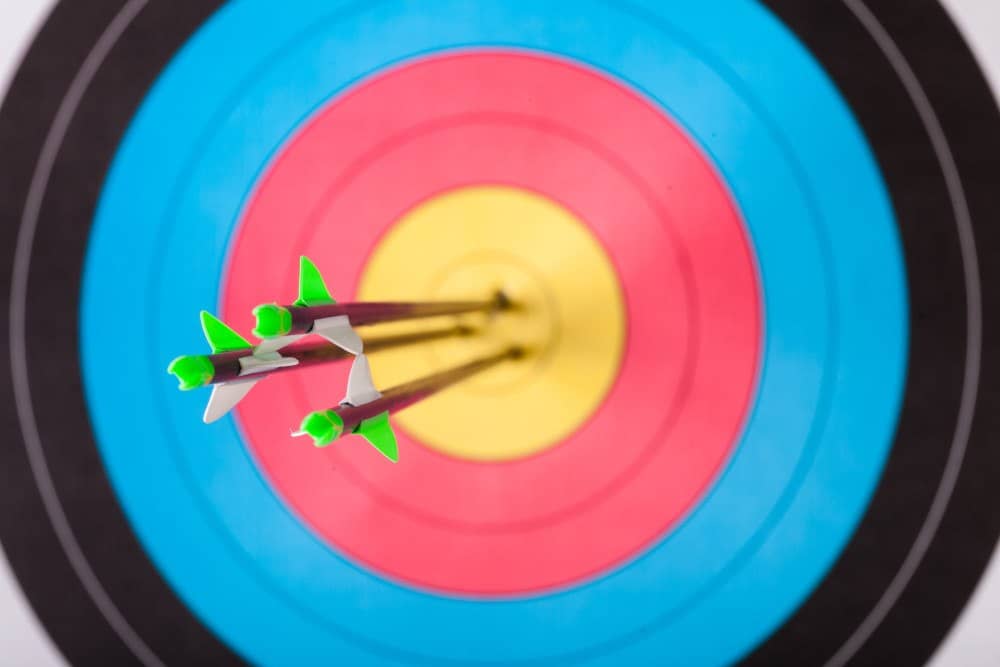This is another Commandment that has to do with your safety, and the safety of those around you. It’s not as serious as the first couple of Commandments (which include “Never Dry Fire a Bow” and “Never Aim at Something You Don’t Want to Hit”) but it’s important nonetheless:
COMMANDMENT #4: ALWAYS USE A BOW STRINGER WHEN STRINGING A RECURVE BOW
We’ll start with…
What’s a Bow Stringer?
A bow stringer a very simple tool that allows you to safely put your bowstring onto your recurve bow.
It looks like this, and it’s very simple to use. Here’s a great video from Sante Fe Archery:
So, that’s the CORRECT way to string a recurve bow (and a big thanks to Santa Fe Archery for posting that video).
Here’s the INCORRECT way to string a bow (also from Santa Fe Archery!), called the “step through method” (jump to 3:26):
There’s ANOTHER incorrect way to string a bow, and that’s called the push-pull method. This guy here uses the push-pull method to string a longbow:
Both of those methods—the step-through and the push-pull—are dangerous and you should avoid them. Here’s why:
The Push-Pull Method and the Step-Through Method Are Bad for Your Bow—And You!
While it may not happen every time you utilize them, the step-through and push-pull method can twist the limbs of your bow, and cause permanent damage to it. It can also cause uneven pressure on the limbs, and THAT can cause permanent damage. Even if you don’t do damage using these methods once or twice, imagine the damage you’ll do to you bow after you’ve used it for a few months or years. It can be severe and irreversible.
So, that right there is reason enough for most people to use a bow stringer—if you’ve spent $150 to $3,000+ on a bow (yes, there are some super-deluxe bows out there), you should do everything you can to take care of it.
The real reason it’s safe to avoid these techniques, though, is not damage to equipment—it’s damage to yourself!
If you use the step-through and push-pull methods, you’re not in full control of your bow, and the bow can slip, spring up (due to the bend and the potential energy you’ve put into it), and hit you in the head or stab you in the eye. And, because these bows are meant to be powerful, they can hit you in the head or stab you in the eye with great force.
Don’t believe me? Check this out. There are two photos in the first comment, and they are NOT pretty: it’s two guys who skipped using a bow stringer and got popped in the eye with their bows, and now they’ve got some really, really purple swelling over their eyeballs. If your stomach turns easily, I wouldn’t look at those pictures.
Point is, people do get hurt, and you need to be careful, and you need to use a bow stringer.
I’ll tell you—writing these Commandments makes me feel like a kill-joy! I want to get back to writing about what I *love* about archery. But, they’re important, so here we are.
OK! What’s next?
The Stringers That Come With Your Bow Are Usually Garbage
It kind of amazes me: even when you buy a really good, really expensive bow, the manufacturer will deliver it with a really crappy, really lousy bow stringer. Most of the stringers I’ve gotten with bows look absolutely flimsy, and I’ve never used one of them. So why do the manufacturers send them in the first place?
It took me a while to figure this out, but I believe it’s because the warranty states that you must use a bow stringer to string the bow, and if you do not use a bow stringer, you won’t be able to get a refund or replacement for a damaged product.
I’d love it if bow makers included a fantastic bow stringers, but in my experience, they do not. Luckily, you can bow a bow stringer for very little. I wrote a post on the bow stringer I like best, and you can find that here.

To Those Who Think I’m Being Needlessly Careful
Yeah, you may be right. And certainly, for bows with a lower draw weight, you can sometimes get away with using the push-pull method or the step-through method—but the higher the weight of your bow, the more difficult—and dangerous—those methods become.
At the end of the day, I’m writing about archery, and I want people to be as safe as possible. If there’s a safety precaution to use, why not use it? And, as somebody who has an archery site, I want people to use every single precaution possible.
Using a bow string literally takes 30 seconds, and it’s a good habit to get into.
Next Up
The Tale of the Broken Arrow!



